Njal's Saga Read online
Page 4
There is a clear Christian presence in the saga, but the question is, does it change anything? It has become common to regard the Conversion episode in Chapters 100–105 as marking a turning-point in the moral structure of the saga, whereby the older, pagan ethic of heroism and pride is replaced by a new Christian ethic of mildness and peace. Such a view is based on a false opposition between pagan and Christian; it overlooks the fact that there are other pagan virtues than heroism and pride, and that humility and a willingness to make peace are among them. Christianity does not affect the values already existing in the saga, in Gunnar’s and Njal’s moderation and love of peace, or in the young Hoskuld’s willingness to be content with the compensation paid for his father (Ch. 94). Those values were there before the Conversion, and continue after it, though set in a changed historical context. A Christian reading would have to judge Flosi’s burning of Bergthorshvol as a sin in the light of the martyr’s death suffered by Njal. The saga, however, treats the burning as a necessary but regrettable deed, and Flosi emerges from it with honour. Nor does the coming of Christianity have any direct effect on the course of events. The Christian elements in the saga are part of its historical realism, of its rhetoric. After the Conversion in the year 1000 people are made to think and speak in religious terms, and there is a new spirit in the land, but the events of the saga follow their own course, quite unaffected by it.
The claim has also been made that it is their pilgrimages to Rome and the absolution they received there that enable Kari and Flosi to become reconciled at the end of the saga. The reconciliation comes after the pilgrimages, to be sure, but it does not come because of them. The reconciliation results from full and sufficient blood revenge, sheer exhaustion and the mutual respect these two good men have long had for each other. The feud, the longest and deadliest in any of the sagas, has simply run its course. What Kari demonstrates is not the value of Christian absolution, but that the only way to end a feud for once and for all is to carry out total vengeance.
The thirteenth-century author of Njal’s Saga was a Christian, looking back with respect at his pagan forebears and the time when Christianity came to his country. He is not preaching a sermon, nor writing a theological treatise, for he knows that the two systems are in many ways compatible. His characters may convert, and acquire Christian rhetoric, but they do not change their nature. Njal is the same man after the Conversion as before, and Hall and Hoskuld would have been the same as they are had there been no Conversion. Njal’s Saga is secular literature.
THE TWO PARTS
Finally, a consideration of parallels and contrasts between the two main parts of the saga, Gunnar’s story and Njal’s story, may help to clarify the shape of the saga. In both sections a series of events growing out of feuds lead to the hero’s being attacked and killed at his own home, after which revenge is exacted. The attack comes when a settlement for a major offence committed by the hero’s side is broken or rejected, leaving the way open for his enemies to attack in force. In both stories Mord Valgardsson plots to bring about the hero’s downfall, which comes after two killings (of father and son) in the same family. The contrasts between the two sections are instructive: burning the besieged in his house, which was rejected as shameful in the attack on Gunnar, is the tactic used in the attack on Bergthorshvol, and Hallgerd’s betrayal is counterpoised by Bergthora’s willingness to die with her husband. The chief contrasts between the Gunnar story and the Njal story, however, are in the nature of the narrative line and in dimension. Gunnar becomes entangled in a series of clashes with different opponents – Otkel and his allies, Starkad and Egil and their sons – who eventually join together to form an overwhelming force against him. In Njal’s story there is a single, straight plot line, from the slaying of Thrain Sigfusson (and even before) to the burning. The other main contrast is the greatly increased scale, which creates, in addition to the rhythm of hopes raised and dashed, a sense of ever heavier seriousness. It may seem callous to speak of Gunnar’s feuds as trivial, since enmities are aroused and men are killed, but in comparison to the immense gravity of the feud in the second part they come off as petty stuff. The killing of the promising Thorgeir Otkelsson is regrettable; the killing of the saintly Hoskuld Thrainsson is tragic. Forty men attack Hlidarendi; a hundred (meaning a hundred and twenty in the old sense of ‘hundred’) attack Bergthorshvol. After his death Gunnar sings in his mound like a bold pagan. The pathos of the deaths of Hoskuld and of Njal and his family, heightened by Christian overtones, is unmatched by anything in the first part of the saga. The vengeance for Gunnar occupies one chapter and falls on four men; for Njal it occupies twenty-seven chapters and some thirty men die. Gunnar’s chief enemies were shallow men, though they dragged some prominent figures along with them. Njal’s chief enemies include, with good reason, some of the best men in Iceland. Njal’s Saga is a large and ponderous saga, and especially the second half shows how massive the effects of human folly – and how ineffective human intelligence – can be.
POSTSCRIPT
This introduction has been drafted in a rented cottage at Brekkuskógur in Biskupstunga in the south-west of Iceland, just short of the rim of the uninhabited central highland, about ten kilometres from the hot springs at Geysir. Two kilometres north of Geysir is Haukadal, where Thangbrand baptized Hall Thorarinsson (see Ch. 102), and where Ari Thorgilsson (author of The Book of Icelanders) spent his formative years in the late eleventh century. Two or three kilometres from where I sit, up the road towards Geysir, is the still-working farm Hlid (now called Uthlid), to which Geir the Godi ‘retired’ when he left our saga in Ch. 80.
Looking south-east from my veranda I see the steam rising from Reykir (the name means ‘steams’) five kilometres away, just as it rose a thousand years ago when the forces of Thorgeir Skorargeir and Mord Valgardsson met with Asgrim Ellida-Grimsson to ride together to the momentous Althing (Ch. 137). In that chapter it is reported that they first crossed the Bruara (‘Bridge river’), and indeed the river at that point (width 25 metres, current swift) shows me that this was a detail worth mentioning, just as the impressive columns of steam would have made Reykir a natural meeting place. Looking beyond Reykir, twelve kilometres further on from where I sit rises the mountain of Mosfell, which gave its name to the farm at its southern foot where Gizur the White lived. And although an intervening rise prevents me from seeing it, I know that four kilometres south of Mosfell is Tunga, Asgrim Ellida-Grimsson’s farm on the river Hvita. With such abundant, palpable evidence to hand it is not surprising that generations of Icelanders regarded the sagas as literally true. Is there any literature as firmly anchored to geographical reality, not to mention socio-historic reality, as the Icelandic sagas?
Fortunately, enjoying this saga to the full does not require having Icelandic blood or having trod the saga sites. In fact it can be misleading to know the sites, and an advantage not to know them. The alert reader will have noticed how, in my musings in the previous paragraph, I was beginning to think that Asgrim and Thorgeir really met at Reykir with their combined forces, and that Geir the Godi – though we can be fairly certain he lived at Hlid – in fact did the things the saga says he did. The reader should not be seduced by the dry, factual prose style and the convincing social and geographical setting into thinking that this is anything other than a masterful work of prose fiction.
Further Reading
Translations into English
The Story of Burnt Njal, translated by George Webbe Dasent (Edinburgh: Edmonston and Douglas, 1861); reprinted in Everyman’s Library, 1911; reissued in 1957 with an introduction by E. O. G. Turville-Petre.
Njál’s Saga, translated by Carl F. Bayerschmidt and Lee M. Hollander (New York: The American-Scandinavian Foundation, 1955); this translation has been reprinted, with an introduction by Thorsteinn Gylfason, by Wordsworth Editions Limited (1998).
Njal’s Saga, translated by Magnus Magnusson and Hermann Pálsson (Harmondsworth: Penguin, i960).
Njal’s Saga,
translated by Robert Cook, in Viðar Hreinsson et al. (eds.) The Complete Sagas of Icelanders (Including 49 Tales), 5 volumes (Reykjavík; Leifur Eiríksson, 1997), III, 1–220; an earlier version of the present translation.
Other Primary Sources in Translation
Ari Thorgilsson, The Book of the Icelanders, translated in Gwyn Jones, The Norse Atlantic Saga, second edition (Oxford: Oxford University Press, 1986), pp. 143–55.
The Book of Settlements; some passages in the above; a translation of one version by Hermann Pálsson and Paul Edwards (Winnipeg: University of Manitoba Press, 1972).
Laws of Early Iceland. Grágás I-II, translated by Andrew Dennis, Peter Foote and Richard Perkins (Winnipeg: University of Manitoba Press, 1980 and 2000).
The Sagas of Icelanders, with an introduction by Robert Kellogg, includes the following: Egil’s Saga; The saga of the People of Vatnsdal; The Saga of the People of Laxardal; The Saga of Hrafnkel Frey’s Godi; The Saga of the Confederates; Gisli Sursson’s Saga; The Saga of Gunnlaug Serpent-tongue; The Saga of Ref the Sly; The Vinland Sagas, (the Saga of the Greenlanders and Eirik the Red’s Saga); and seven Tales (Harmondsworth, Penguin, 2000).
General Criticism of the Sagas of Icelanders
Andersson, Theodore M., The Problem of Icelandic Saga Origins (New Haven: Yale University Press, 1964).
—— ‘The Textual Evidence for an Oral Family Saga’, Arkiv for nordisk filologi, 81 (1966), 1–23.
——, ‘The Displacement of the Heroic Ideal in the Family Sagas’, Speculum, 45 (1970), 575–93.
Kellogg, Robert, and Scholes, Robert, The Nature of Narrative (New York: Oxford University Press, 1966).
Ker, W. P, Epic and Romance (London: Macmillan, 1897).
Miller, William Ian, Bloodtaking and Peacemaking: Feud, Law, and Society in Saga Iceland (Chicago: University of Chicago Press, 1990).
Nordal, Sigurdur, ‘The Historical Element in the Icelandic Family Sagas’, W P. Ker Memorial Lectures, 15 (Glasgow, 1957).
Ólason, Vésteinn, Dialogues with the Viking Age: Narration and Represen tation in the Sagas of the Icelanders, translated by Andrew Wawn (Reykjavík: Mál og menning, 1998).
Schach, Paul, Icelandic Sagas (Boston: Twayne, 1984).
Studies of Njal’s Saga
Allen, Richard F, Fire and Iron: Critical Approaches to Njáls saga (Pittsburgh: University of Pittsburgh Press, 1971).
Clover, Carol J., ‘Hildigunnr’s Lament’, in John Lindow, Lars Lödie;nnroth and Gerd Wolfgang Weber (eds.), Structure and Meaning in Old Norse Literature (Odense: Odense University Press, 1986), 141–83.
Dronke, Ursula, ‘The Role of Sexual Themes in Njáls Saga, Dorothea Coke Memorial Lecture, University College London (London: Viking Society, 1981).
Fox, Denton, ‘Njáls Saga and the Western Literary Tradition’, Comparative Literature, 15 (1963), 289–310.
Jesch, Judith, ‘“Good Men” and Peace in Njáls saga, in John Hines and Desmond Slay (eds.), Introductory Essays on Egils saga and Njáls saga (London: Viking Society for Northern Research, 1992), 64–82.
Lönnroth, Lars, Njáls Saga: A Critical Introduction (Berkeley: University of California Press, 1976).
Maxwell, Ian, ‘Pattern in Njáls saga, Saga-Book, 15 (1957–61), 17–47.
Miller, William Ian, Justifying Skarpheðinn: Of Pretext and Politics in the Icelandic Bloodfeud’, Scandinavian Studies, 55 (1983), 316–44.
Poole, Russell, ‘Darraðarljóð: A Viking Victory over the Irish’, in his Viking Poems on War and Peace (Toronto: University of Toronto Press, 1991), 116–56.
Sayers, William, ‘Gunnar, his Irish Wolfhound Sámr, and the Passing of the Old Heroic Order in Njáls saga, Arkiv f ö r nordisk filologi, 112 (1997), 43–66.
Sveinsson, Einar Ólafur, Njáls Saga: A Literary Masterpiece, edited and translated by Paul Schach (Lincoln: University of Nebraska Press, 1971).
A Note on the Translation
This translation is based on the edition of Brennu-Njáls saga by Einar Ólafur Sveinsson, Íslenzk Fornrit, 12 (Reykjavík, 1954). It differs from previous translations of Njál’s Saga, except for Dasent’s in 1861, in attempting to duplicate the sentence structure and spare vocabulary of the Icelandic text. Subordinate clauses, introduced by conjunctions like ‘when’, ‘because’, ‘who’, ‘although’ and so on, are relatively infrequent in the saga (indeed in all the Icelandic sagas), where there is a marked preference for independent clauses. The saga typically says: ‘They had a short passage and the winds were good’ (Ch. 9), not ‘They had a short passage because the winds were good.’ Often an independent clause stands alone, but at other times a group of independent clauses is joined by a series of ‘ands’ and ‘buts’, producing a sentence like this: ‘Glum often raised this matter with Thorarin, and for a long time Thorarin avoided it, but finally they gathered men and rode off, twenty in all, westward to Dalir and they came to Hoskuldsstadir, and Hoskuld welcomed them and they stayed there overnight’ (Ch. 13). This is an effective way of hastening the narrative when the author wants to cover a sequence of events quickly.
Another feature imitated in this translation is the absence of the present participle, a standard fixture in modern English and therefore natural in a passage like this (Ch. 145) from the translation by Magnus Magnusson and Hermann Pálsson:
Kari Solmundarson met Bjarni Brodd-Helgason. Kari seized a spear and lunged at him, striking his shield; and had Bjarni not wrenched the shield to one side, the spear would have gone right through him. He struck back at Kari, aiming at the leg; Kari jerked his leg away and spun on his heel, making Bjarni miss. [italics added]
Here, by contrast, is the same passage as translated in this volume, in greater conformity with the original:
Kari Solmundarson came up to Bjarni Brodd-Helgason; he grabbed a spear and thrust it at him, and it hit his shield. Bjarni jerked his shield to the side – otherwise the spear would have gone through him. He swung his sword at Kari and aimed at the leg; Kari pulled his leg back and turned on his heel, so that Bjarni missed him.
This translation also tries to reproduce the limited vocabulary of the Icelandic text. In describing travel, for example, there is seldom much variation beyond ‘go’ and ‘walk’ and ‘ride’. Direct speech (which, by the way, constitutes about forty per cent of this saga) is introduced by ‘say’ or ‘speak’ or ‘ask’ or ‘answer’. This translation keeps to the principle of minimal variation and introduces no artificial additives like ‘declare’ (except in legal scenes), ‘emphasize’, ‘assert’, ‘respond’, ‘retort’, ‘reply’, ‘question’ and ‘inquire’. The verb ‘say’ is often used with questions as well as with statements, and the result may seem to be an over-use of that verb, as in the following:
Njal said, ‘I must tell you of the slaying of your foster-father Thord; Gunnar and I have just made a settlement on it, and he has paid double compensation.’
‘Who killed him?’ said Skarphedin.
‘Sigmund and Skjold, but Thrain was close at hand,’ said Njal
‘They thought they needed a lot of help,’ said Skarphedin. ‘But how far must this go before we can raise our hands?’
‘Not far,’ said Njal, ‘and then nothing will stop you, but now it’s important to me that you do not break this settlement.’ (Ch. 43)
It is hoped that the reader of this translation will accept – and even learn to enjoy – these and other efforts at fidelity, though they may seem strange at first. The intent has been to create a translation with the stylistic ‘feel’ of the Icelandic original.
As is common in translations from Old Icelandic, the spelling of proper nouns has been simplified, both by the elimination of non-English letters and markings and by the reduction of inflections. Thus ‘Hallgerðr’ becomes ‘Hallgerd’, ‘Höskuldr’ becomes ‘Hoskuld’, and ‘Sámr’ (pronounced, roughly, ‘Sowmer’) turns dully into ‘Sam’. Characters are frequently identified in terms of their fathers, and readers will soon grasp that ‘-dottir’ means ‘daughter of ’
and that ‘-son’ means ‘son of ’. Place names have been rendered a trifle more conservatively than is usual, ‘Laxardalr’ becoming ‘Laxárdal’ rather than ‘Lax River Valley’.
Chronology of Njal’s Saga
The following table of some of the main events of the saga and of early Icelandic history is based on the research of Gudbrandur Vigfússon and Finnur Jónsson, as reviewed by Einar Ólafur Sveinsson in his 1954 edition of the saga. The dates are of course approximate, even for the events that actually took place (indicated in bold face). Of course, most events in the saga are fictional, and the dates estimated here are meant only to give an overview of the time span and sequence of events. It should be mentioned that the Establishment of the Fifth Court is out of historical sequence in the saga; the general view is that it took place in 1004.
Settlement of Iceland 870–930
Birth of Mord Gigja 900
Establishment of the Althing 935
Birth of Njal 935
Birth of Hallgerd 937–40
Birth of Gunnar 945
Hrut’s journey abroad 961
Hrut’s marriage to Unn 963
Division of Iceland into quarters 965

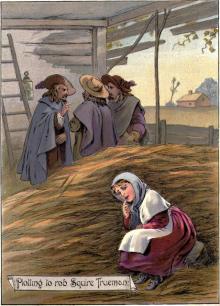 Goody Two-Shoes
Goody Two-Shoes The Pearl Box
The Pearl Box And when you gone...
And when you gone... Stranger At The Other Corner
Stranger At The Other Corner My Young Days
My Young Days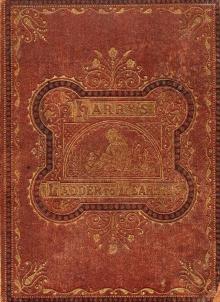 Harry's Ladder to Learning
Harry's Ladder to Learning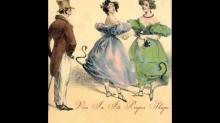 Vice in its Proper Shape
Vice in its Proper Shape_preview.jpg) Promise (the curse)
Promise (the curse)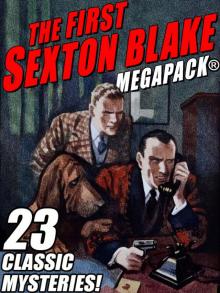 The First Sexton Blake
The First Sexton Blake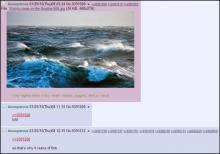 Golden Moments
Golden Moments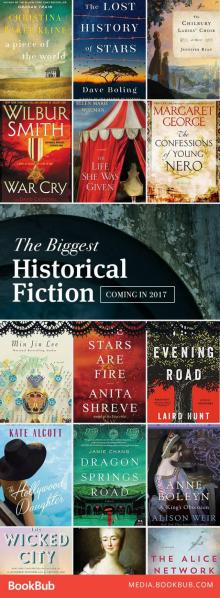 Hildebrand; or, The Days of Queen Elizabeth, An Historic Romance, Vol. 2 of 3
Hildebrand; or, The Days of Queen Elizabeth, An Historic Romance, Vol. 2 of 3 The Ice Queen
The Ice Queen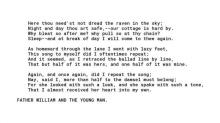 Phebe, the Blackberry Girl
Phebe, the Blackberry Girl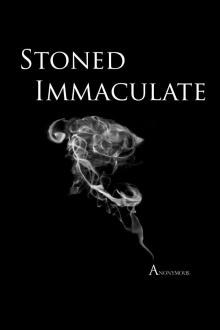 Stoned Immaculate
Stoned Immaculate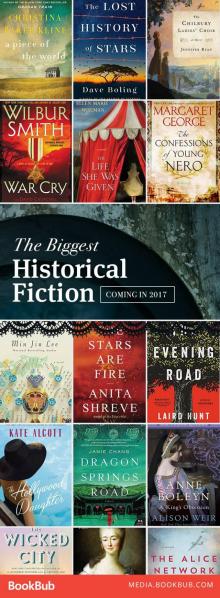 Hildebrand; or, The Days of Queen Elizabeth, An Historic Romance, Vol. 3 of 3
Hildebrand; or, The Days of Queen Elizabeth, An Historic Romance, Vol. 3 of 3 The Wonder of War on Land
The Wonder of War on Land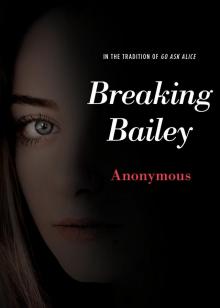 Breaking Bailey
Breaking Bailey The Little Girl Who Was Taught by Experience
The Little Girl Who Was Taught by Experience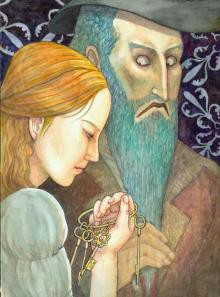 The Popular Story of Blue Beard
The Popular Story of Blue Beard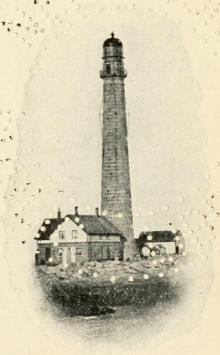 The Life Savers: A story of the United States life-saving service
The Life Savers: A story of the United States life-saving service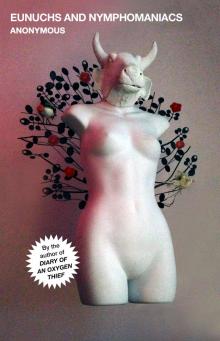 Eunuchs and Nymphomaniacs
Eunuchs and Nymphomaniacs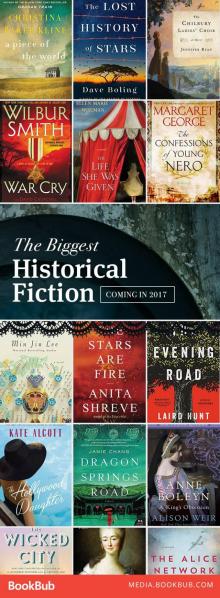 Hildebrand; or, The Days of Queen Elizabeth, An Historic Romance, Vol. 1 of 3
Hildebrand; or, The Days of Queen Elizabeth, An Historic Romance, Vol. 1 of 3 Kitty's Picnic, and Other Stories
Kitty's Picnic, and Other Stories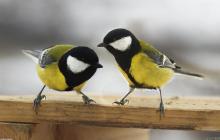 Two Yellow-Birds
Two Yellow-Birds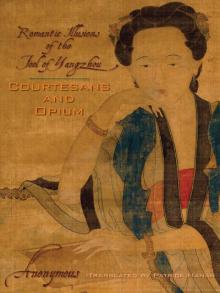 Courtesans and Opium
Courtesans and Opium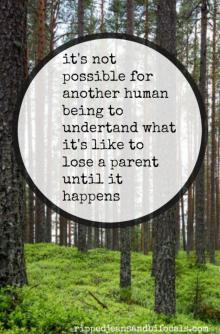 The Emigrant's Lost Son; or, Life Alone in the Forest
The Emigrant's Lost Son; or, Life Alone in the Forest Toots and His Friends
Toots and His Friends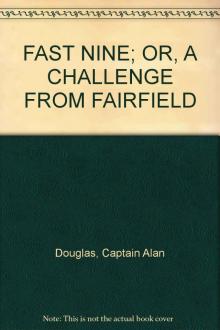 Fast Nine; or, A Challenge from Fairfield
Fast Nine; or, A Challenge from Fairfield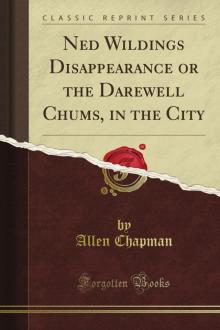 Ned Wilding's Disappearance; or, The Darewell Chums in the City
Ned Wilding's Disappearance; or, The Darewell Chums in the City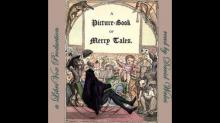 A Picture-book of Merry Tales
A Picture-book of Merry Tales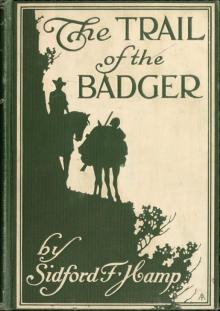 The Trail of The Badger: A Story of the Colorado Border Thirty Years Ago
The Trail of The Badger: A Story of the Colorado Border Thirty Years Ago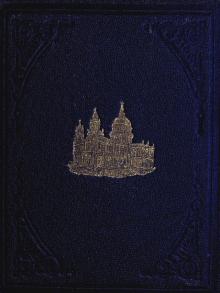 Peter Parley's Visit to London, During the Coronation of Queen Victoria
Peter Parley's Visit to London, During the Coronation of Queen Victoria The Rainbow, After the Thunder-Storm
The Rainbow, After the Thunder-Storm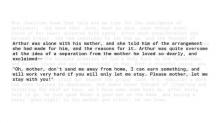 Arthur Hamilton, and His Dog
Arthur Hamilton, and His Dog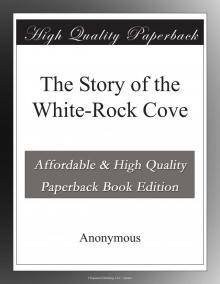 The Story of the White-Rock Cove
The Story of the White-Rock Cove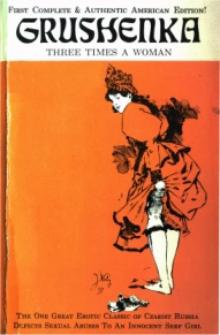 Grushenka. Three Times a Woman
Grushenka. Three Times a Woman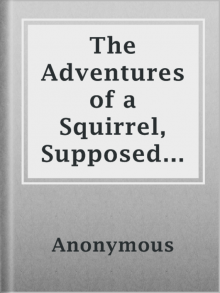 Adventures of a Squirrel, Supposed to be Related by Himself
Adventures of a Squirrel, Supposed to be Related by Himself Falling in Love...Again
Falling in Love...Again The Colossal Camera Calamity
The Colossal Camera Calamity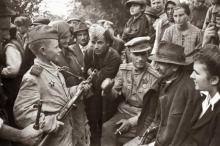 Child of the Regiment
Child of the Regiment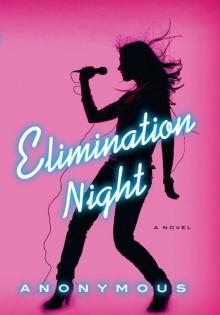 Elimination Night
Elimination Night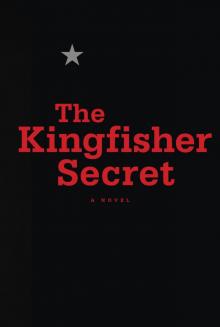 The Kingfisher Secret
The Kingfisher Secret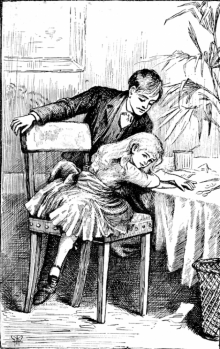 Left to Ourselves; or, John Headley's Promise.
Left to Ourselves; or, John Headley's Promise.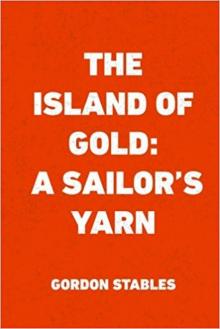 The Island of Gold: A Sailor's Yarn
The Island of Gold: A Sailor's Yarn Adventures of Bobby Orde
Adventures of Bobby Orde Twain, Mark: Selected Obituaries
Twain, Mark: Selected Obituaries When Love Goes Bad
When Love Goes Bad The Incest Diary
The Incest Diary Calling Maggie May
Calling Maggie May The Infidelity Diaries
The Infidelity Diaries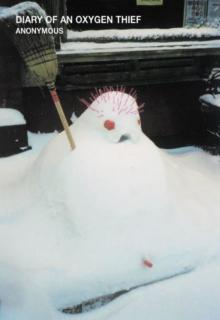 Diary of an Oxygen Thief (The Oxygen Thief Diaries)
Diary of an Oxygen Thief (The Oxygen Thief Diaries)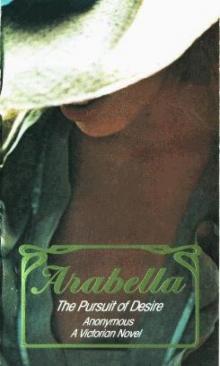 ARABELLA
ARABELLA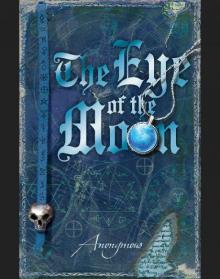 The Eye of the Moon
The Eye of the Moon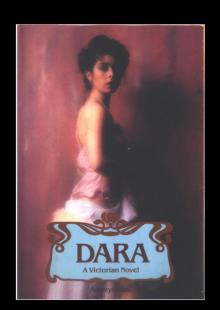 Dara
Dara THE ALTAR OF VENUS: The Making of a Victorian Rake
THE ALTAR OF VENUS: The Making of a Victorian Rake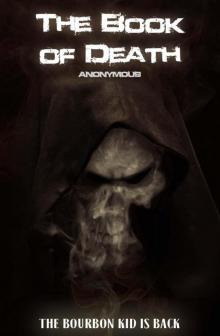 The Book of Death
The Book of Death The Book of David
The Book of David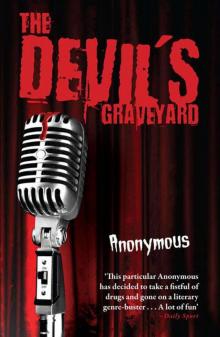 The Devil's Graveyard
The Devil's Graveyard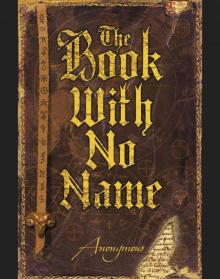 The Book With No Name
The Book With No Name I Am A Lesbian
I Am A Lesbian Njal's Saga
Njal's Saga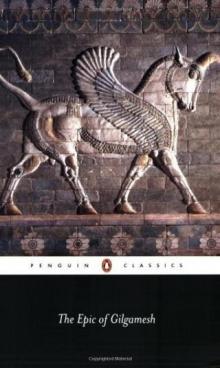 The Epic of Gilgamesh
The Epic of Gilgamesh Darling
Darling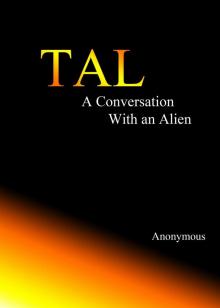 Tal, a conversation with an alien
Tal, a conversation with an alien Go Ask Alice
Go Ask Alice Aphrodizzia
Aphrodizzia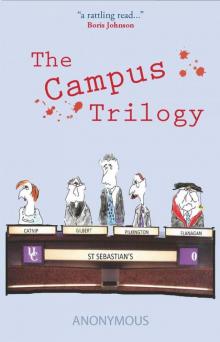 The Campus Trilogy
The Campus Trilogy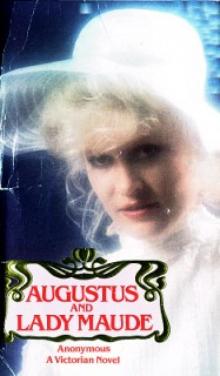 Augustus and Lady Maude
Augustus and Lady Maude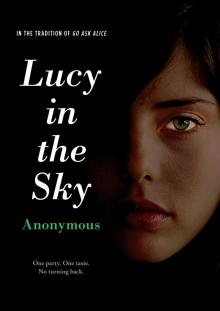 Lucy in the Sky
Lucy in the Sky Sight Unseen
Sight Unseen Pleasures and Follies
Pleasures and Follies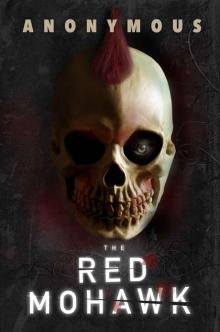 The Red Mohawk
The Red Mohawk A Fucked Up Life in Books
A Fucked Up Life in Books Chameleon On a Kaleidoscope (The Oxygen Thief Diaries)
Chameleon On a Kaleidoscope (The Oxygen Thief Diaries)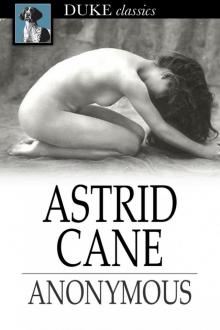 Astrid Cane
Astrid Cane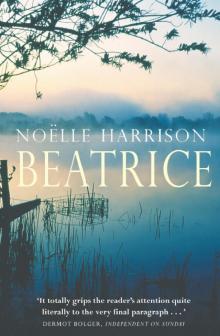 BEATRICE
BEATRICE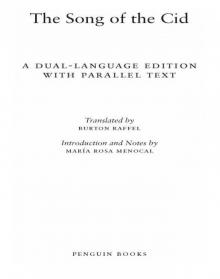 The Song of the Cid
The Song of the Cid